© 2025 ALLCITY Network Inc.
All rights reserved.

The departure of Demaryius Thomas left a void in the Denver Broncos passing attack but was filled from an unlikely source to shoulder the workload in Week 9 against the Houston Texans—tight end Jeff Heuerman.
Heuerman’s been on the team since 2015, playing sparingly after his career was derailed by a horrific ACL tear that kept him out his entire rookie season.
After starting all of eight games in his first three years in Denver, he’s suddenly become a model of stability for the Broncos in 2018, coming off a career-high performance against the Texans in his ninth start in 2018.
The former third-round pick wasn’t even a lock to make the roster all that long ago, working his way into the starting lineup with consistent performances as a blocker, making his 10 reception for 83 yards and a touchdown that much more surprising in his breakout game against Houston.
Given his draft status, that’s the type of performance the Broncos have been waiting for from Heuerman his entire career, which is exactly why we went back to the tape to analyze how No. 82 found success, and answer the question of if his Week 9 performance can be replicated on a consistent basis going forward.
As a receiver
What stood out most from Heuerman’s 10-reception game was his ability to run after the catch. The tight end was extraordinary running after the catch, putting on display a powerful array of jump cuts to make defenders miss in the open field, allowing him to extend crucial third downs. As a cherry on top, he unleashed filthy stiff arms on defensive backs that stood no chance against the stout 255-pound tight end.
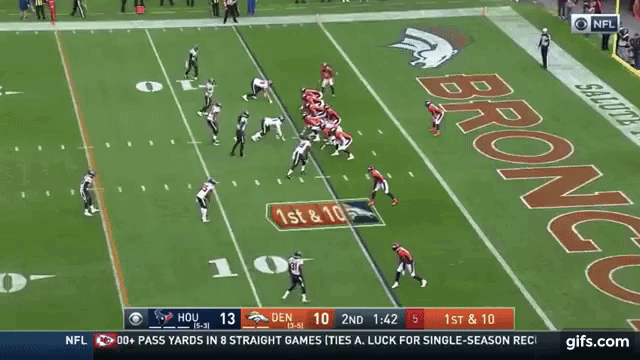
Every yard Heuerman produced after the catch was essential, with a majority of his touches—and most if not all his big plays—coming on short dump offs, primarily on block and release plays.
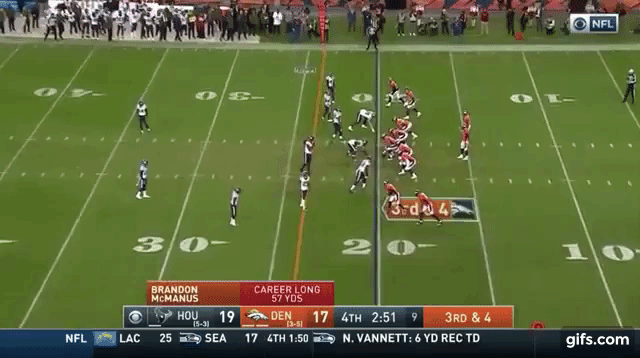
Which doesn’t help answer the biggest question surrounding Heuerman as a receiver: his ability to get open consistently.
The short answer to that question is that he wasn’t separating with any sort of consistency downfield, or underneath, though he showed a little more subtlety in his route running with the ability to gain position even with defenders in tight coverage.
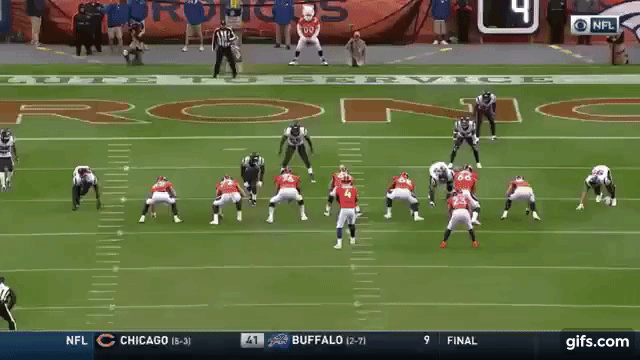
That said, despite not getting open consistently, Heuerman showed himself to be an effective safety valve in the short passing game due to his ability to extend plays with his legs.
With Denver facing more loaded boxes—a defensive strategy to stop the Broncos run game—Case Keenum has also been under pressure sooner, as loading the box has had a two-fold effect; allowing defenses to attack the ground game in mass, while also generating pressure quicker with the numerical advantage, forcing Keenum to settle for check downs or make tough throws under duress to slow-developing routes downfield.
With so many block and release routes from Heuerman, he proved to be the perfect counter to this defensive adjustment.
As defenses have to respect his receiving ability underneath and the threat he presents after the catch, this could move second-level defenders away from the line of scrimmage, opening up room for the running game.
Heuerman has the size and speed combination to be a handful to tackle in the open field but he’s far from a mismatch as a route runner, a big issue when trying to assess his long-term viability and mismatch potential.
Despite a crucial 3rd-and-3 drop on a nicely executed rub-route concept, throughout the game, Heuerman showed soft hands on several tough grabs.
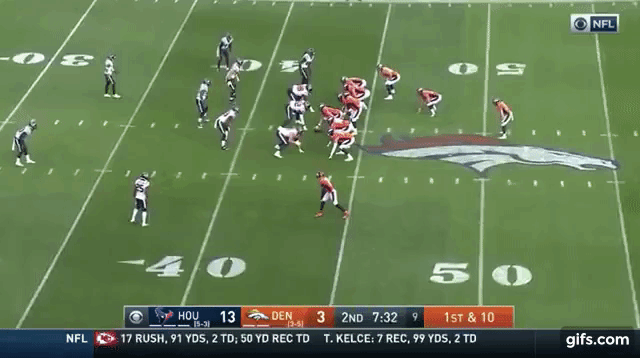
The tight end proved to be a valuable chess piece and was utilized in a variety of alignments: out wide, in two tight end sets lined up on the weak side, as a single tight end in-line, in the slot, out the backfield, and put in motion all over.
Ultimately, he was most productive in-line or out of the backfield on block and release plays, though he has shown some intriguing skills when used out wide.
Heuerman’s 6-foot-5 frame plays a big part in this, as he can high-point throws to the sideline on intermediate routes and be a dangerous matchup for smaller DBs outside. His ability on back-shoulder throws is really intriguing and gives Denver yet another imposing outside receiver who when lined up out wide, can be a mismatch.
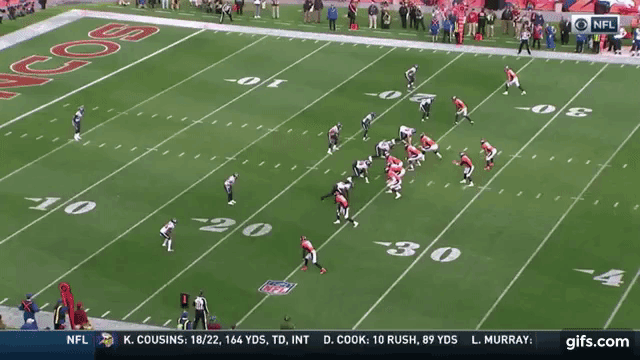
As a blocker
In some ways, we’re burying the lede here, as Heuerman’s stats and ability after the catch impressed, but what really stood out when rewatching the tape were his skills as a blocker, as Heuerman played a close to flawless game against arguably the best group of edge defenders the Broncos have faced all year.
He was masterful as a run blocker creating push and sealing the edge, including pushing Jadeveon Clowney five-yards downfield for Devontae Booker to run untouched on his touchdown scamper.
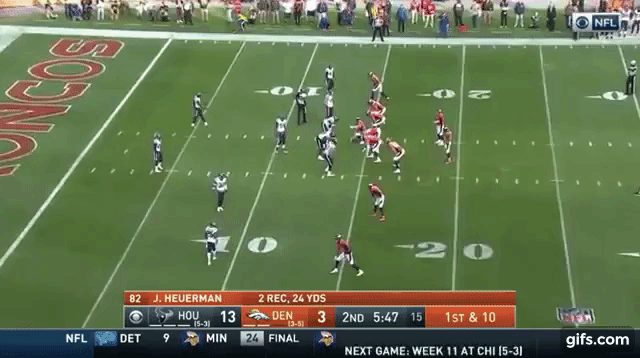
In-line or with a head of steam in motion, the former Buckeye was a beauty to watch sealing the edge for the ground game, and consistently created holes for the run game to follow behind.
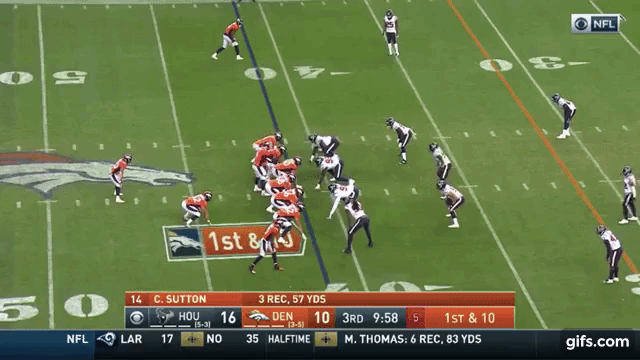
As a pass protector, he was as impressive if not more, dominating Clowney and Whitney Mercilus in stretches, handling their length and speed with great technique and strong hands at the point of attack.
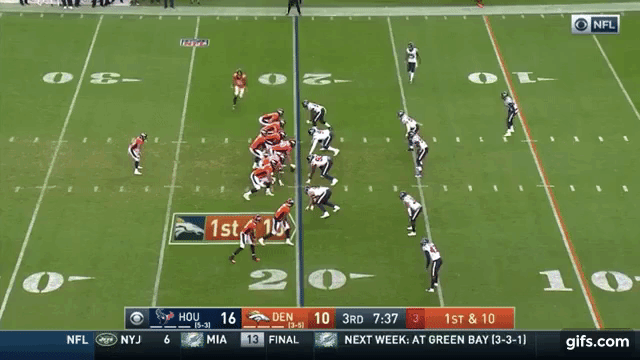
While questions remain about Heuerman’s impact as a receiver, he’s been incredibly impressive as a blocker and has only allowed a single run stop since Week 4, without conceding a sack, tackle for a loss or being penalized since then.
The future at tight end
Heuerman’s in a contract year and finally playing up to his potential. With more performances like the one against the Texans, it’ll be tough to let him go, particularly with the lack of reliable alternatives at the tight end position on the roster right now.
The former third-rounder is slowly proving his value as an underneath receiver and blocker, but he still needs a partner in the tight end room who can stretch the seam. With another tight end who can stretch defenses vertically combined with No. 82’s ability underneath, the Broncos pass game would suddenly become much more dynamic and harder to defend for safeties and linebackers.
Given the struggles the offense has had on the offensive line, Heuerman’s blocking ability can’t be underestimated as the Broncos build a run-first offensive identity.
Heuerman is a safe outlet with the added advantage of being a YAC threat and a really good blocker.
While it’s important not to overreact to his latest performance—given how many receptions came off of block and release routes—it’s undeniable that he had a very impressive showing none the less. His struggles over the course of the season to get open consistently are concerning, but he has a role on this offense and seems to be developing chemistry with Keenum.
With 2018 seeming like a lost season, monitoring Heuerman’s growth as a player in a contract year is one of many storylines to follow for the Broncos attack.
Comments
Share your thoughts
Join the conversation



